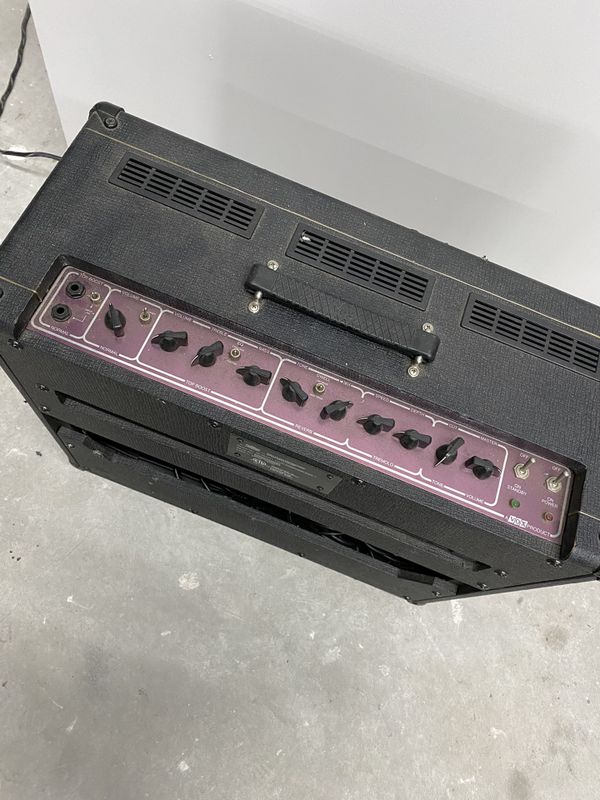
Sounds more like “crackle” or “shatter” to me! (Reviewer dismounts hobbyhorse.) It’s not a “pretty” sound, but man, the energy! Hearing distortion like that always makes me wonder why the hell the guitar community describes this property as “chime,” since bells ring clear and pure at high frequencies. Hear that spattery sizzle on the riff’s highest notes? To me, that’s Vox in a nutshell. Check out the first riff in the demo clip, played on the bright bridge pickup of a 1963 Stratocaster. At higher gain, you get that uniquely Vox distortion, with its violent upper-mid breakup. Most sounds exhibit a crackling presence, while low-gain tones are luscious and smooth. But Victory eases the process with external biasing points and an excellent bias walkthrough in the manual.ĭespite those departures from AC30 orthodoxy, the Copper sounds like a fine original. Maybe that’s one reason vintage AC30s tend to require frequent service.) The Copper requires biasing when installing new power tubes. “This can lead to early valve failure and the output stages running extremely hot, even when they are not being played.” (Huh. “Many EL84 amplifiers exceeded the recommended plate dissipation,” explains the manufacturer.
#Ac30 amp mod
This mod produces very natural and sparkling tones reminiscent of early British amplifiers.” But in high-power mode, the amp employs both cathode and fixed bias. According to Victory, “In low-power mode, which uses lower plate voltages, the amplifier runs entirely in cathode bias, which is effectively Class A operation. The Copper’s low-power switch drops the wattage from 35 to 12.

There’s also a mono effects loop.Īnother departure is the amp’s biasing scheme. It doesn’t sound very spring-like, but it’s an attractive sound that gets the job done. The splash comes from a Spin FV-1, the same chip used in so many current digital reverb pedals. Meanwhile, the reverb is digital-one reason the amp weighs so little. Unlike a vintage-style AC30, the Copper is a single-channel model minus a tremolo circuit. There’s also an EF184 pentode driving the preamp’s tone stack.
#Ac30 amp plus
Like an AC30, the Copper employs four EL84 power tubes, plus two 12AX7/ECC83 preamp tubes. (You hear a close-miked G12H in the demo clip.) A fabulous-sounding cab in a matching copper color, it does a magnificent job of supporting the Copper-in both senses. We tested the Copper with Victory’s V12-VB, a vertically oriented 2x12 cabinet housing a Celestion G12H and a G12M Greenback. The head weighs about 18 pounds-less than half the weight of a traditional Vox head. The transformers are from England’s Demeter Windings, while the caps are from South Korea’s Samwha company. It’s a neat, attractive layout, mixing traditional through-hole components with modern parts. Removing a couple more reveals the inner workings. Removing a couple of screws provides access to the tubes. The seven chicken-head knobs are one of the few nods to traditional Vox style. Most of the housing is perforated, facilitating tube-cooling air circulation and lightening the load. The VC35 head resides in an all-metal enclosure-there’s not a splinter of wood.

The concept isn’t all that’s lovely here. Ask anyone who’s ever earned a hernia from hoisting a heavy Vox (me, for example): An AC30 you can sling over one shoulder is a lovely concept. It comes with a cute padded canvas gigbag with a shoulder strap. The head-only unit weighs roughly 18 pounds, which is less than half the heft of an equivalent modern Vox head. The first thing you notice about Victory’s VC35-even before unboxing-is how light it is. But cosmetically, it’s a big, bold departure. Simply put, the amp sounds like a fine old AC30, even with the addition of a few welcome updates. amp builder Victory’s take on Vox’s AC30, "The Copper," manages to walk both sides of the traditional/new-school divide. We’ve seen magnificent clones of vintage amps, and equally magnificent amps that have only tentative ties to the old designs that inspired them.
#Ac30 amp update
Would you cling as closely as possible to the original sound, or try to update it for current tastes? Would you mimic the original appearance exactly or create something free of visual associations? Okay, imagine you’re designing a modern amp based on a vintage model.


 0 kommentar(er)
0 kommentar(er)
